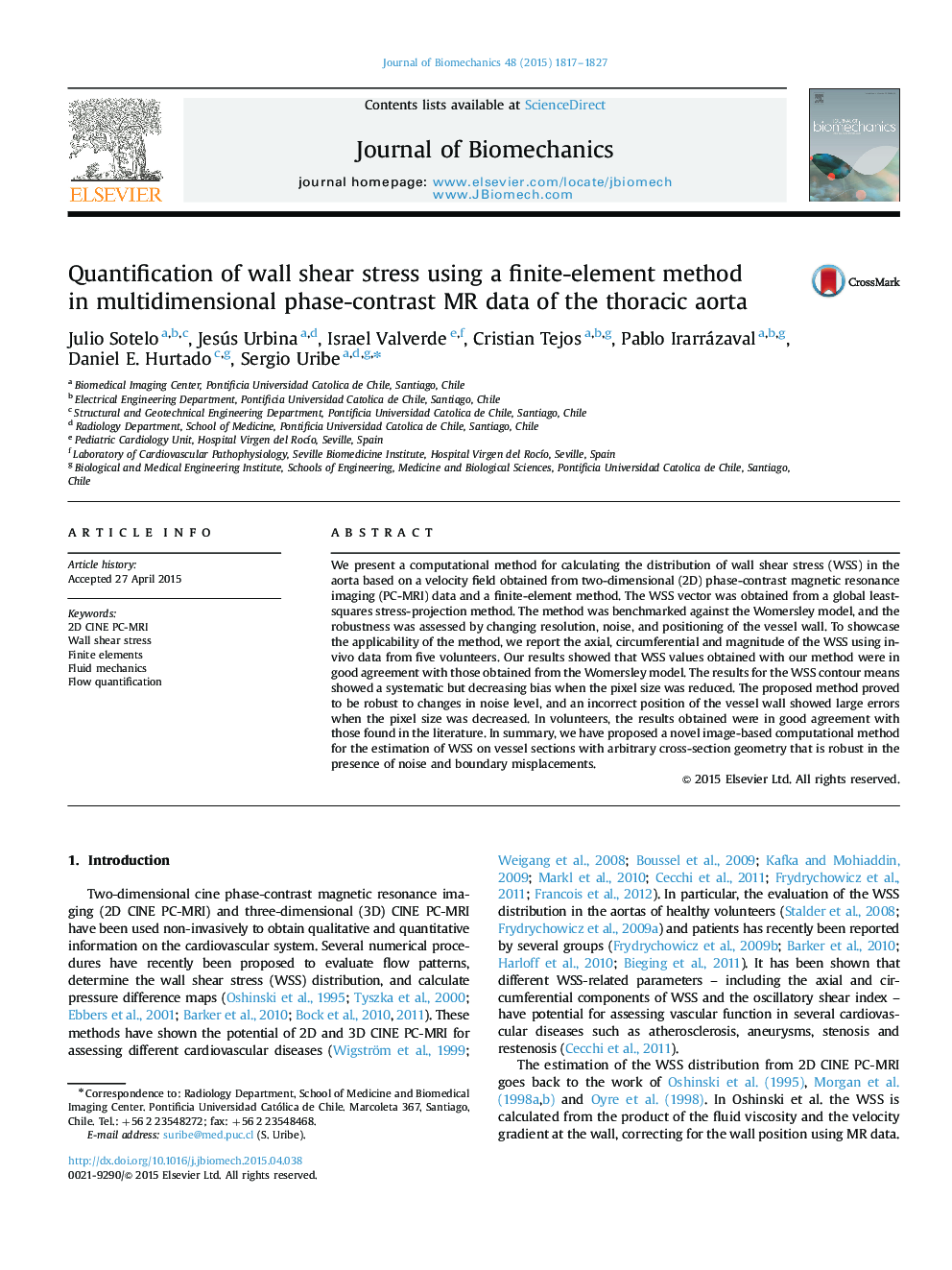| Article ID | Journal | Published Year | Pages | File Type |
|---|---|---|---|---|
| 10431392 | Journal of Biomechanics | 2015 | 11 Pages |
Abstract
We present a computational method for calculating the distribution of wall shear stress (WSS) in the aorta based on a velocity field obtained from two-dimensional (2D) phase-contrast magnetic resonance imaging (PC-MRI) data and a finite-element method. The WSS vector was obtained from a global least-squares stress-projection method. The method was benchmarked against the Womersley model, and the robustness was assessed by changing resolution, noise, and positioning of the vessel wall. To showcase the applicability of the method, we report the axial, circumferential and magnitude of the WSS using in-vivo data from five volunteers. Our results showed that WSS values obtained with our method were in good agreement with those obtained from the Womersley model. The results for the WSS contour means showed a systematic but decreasing bias when the pixel size was reduced. The proposed method proved to be robust to changes in noise level, and an incorrect position of the vessel wall showed large errors when the pixel size was decreased. In volunteers, the results obtained were in good agreement with those found in the literature. In summary, we have proposed a novel image-based computational method for the estimation of WSS on vessel sections with arbitrary cross-section geometry that is robust in the presence of noise and boundary misplacements.
Related Topics
Physical Sciences and Engineering
Engineering
Biomedical Engineering
Authors
Julio Sotelo, Jesús Urbina, Israel Valverde, Cristian Tejos, Pablo Irarrázaval, Daniel E. Hurtado, Sergio Uribe,
